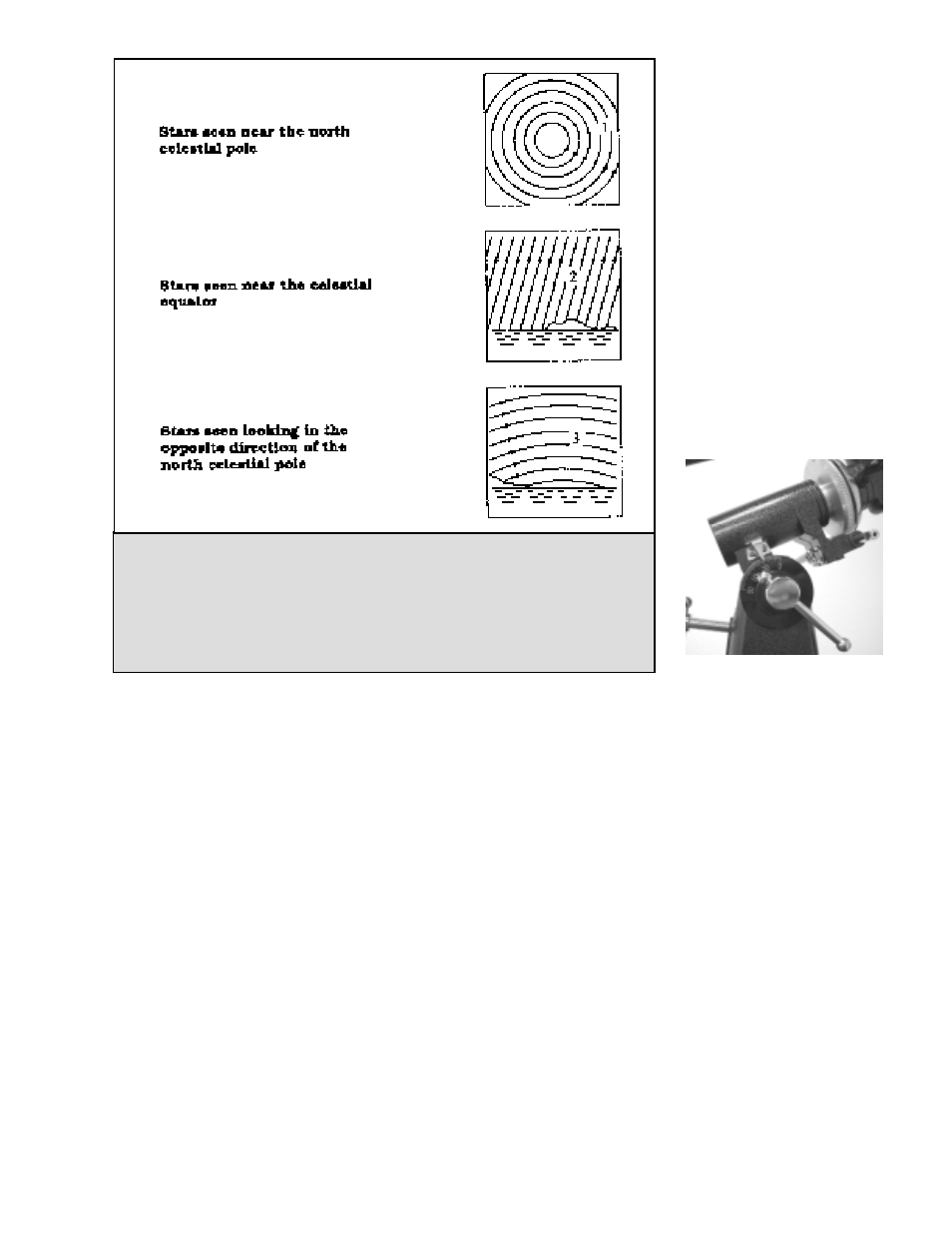Celestron PowerSeeker 70 70mm f/10 AZ Refractor Telescope User Manual
Page 17

17
Figure 4-3
P
P
o
o
l
l
a
a
r
r
A
A
l
l
i
i
g
g
n
n
m
m
e
e
n
n
t
t
w
w
i
i
t
t
h
h
t
t
h
h
e
e
L
L
a
a
t
t
i
i
t
t
u
u
d
d
e
e
S
S
c
c
a
a
l
l
e
e
The easiest way to polar align a telescope is with a latitude scale. Unlike other methods that require you to find the celestial pole
by identifying certain stars near it, this method works off of a known constant to determine how high the polar axis should be
pointed. The PowerSeeker equatorial mount can be adjusted from about 20 to 60 degrees (see figure 4-3).
The constant, mentioned above, is a relationship between your latitude and the angular distance the celestial pole is above the
northern (or southern) horizon. The angular distance from the northern horizon to the north celestial pole is always equal to
your latitude. To illustrate this, imagine that you are standing on the north pole, latitude +90°. The north celestial pole, which
has a declination of +90°, would be directly overhead (i.e., 90 above the horizon). Now, let’s say that you move one degree
south — your latitude is now +89° and the celestial pole is no longer directly overhead. It has moved one degree closer toward
the northern horizon. This means the pole is now 89° above the northern horizon. If you move one degree further south, the
same thing happens again. You would have to travel 70 miles north or south to change your latitude by one degree. As you can
see from this example, the distance from the northern horizon to the celestial pole is always equal to your latitude.
If you are observing from Los Angeles, which has a latitude of 34°, then the celestial pole is 34° above the northern horizon.
All a latitude scale does then is to point the polar axis of the telescope at the right elevation above the northern (or southern)
horizon.
To align your telescope:
1. Make sure the polar axis of the mount is pointing due north. Use a landmark that you know faces north.
2. Level the tripod. Leveling the tripod is only necessary if using this method of polar alignment.
3. Adjust the mount in altitude until the latitude indicator points to your latitude. Moving the mount affects the angle the
polar axis is pointing. For specific information on adjusting the equatorial mount, please see the section “Adjusting the
Mount.”
This method can be done in daylight, thus eliminating the need to fumble around in the dark. Although this method does
NOT
put you directly on the pole, it will limit the number of corrections you will make when tracking an object.
Figure 4-2
All stars appear to rotate around the celestial poles. However, the appearance of this
motion varies depending on where you are looking in the sky. Near the north celestial pole
the stars scribe out recognizable circles centered on the pole (1). Stars near the celestial
equator also follow circular paths around the pole. But, the complete path is interrupted by
the horizon. These appear to rise in the east and set in the west (2). Looking toward the
opposite pole, stars curve or arc in the opposite direction scribing a circle around the
opposite pole (3).
